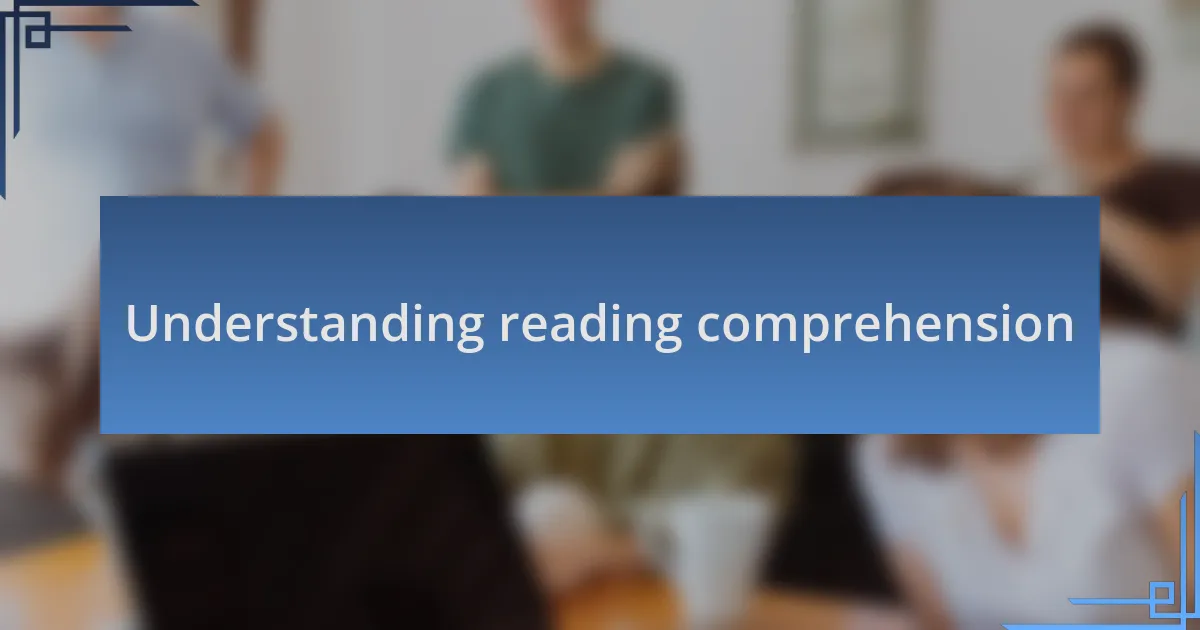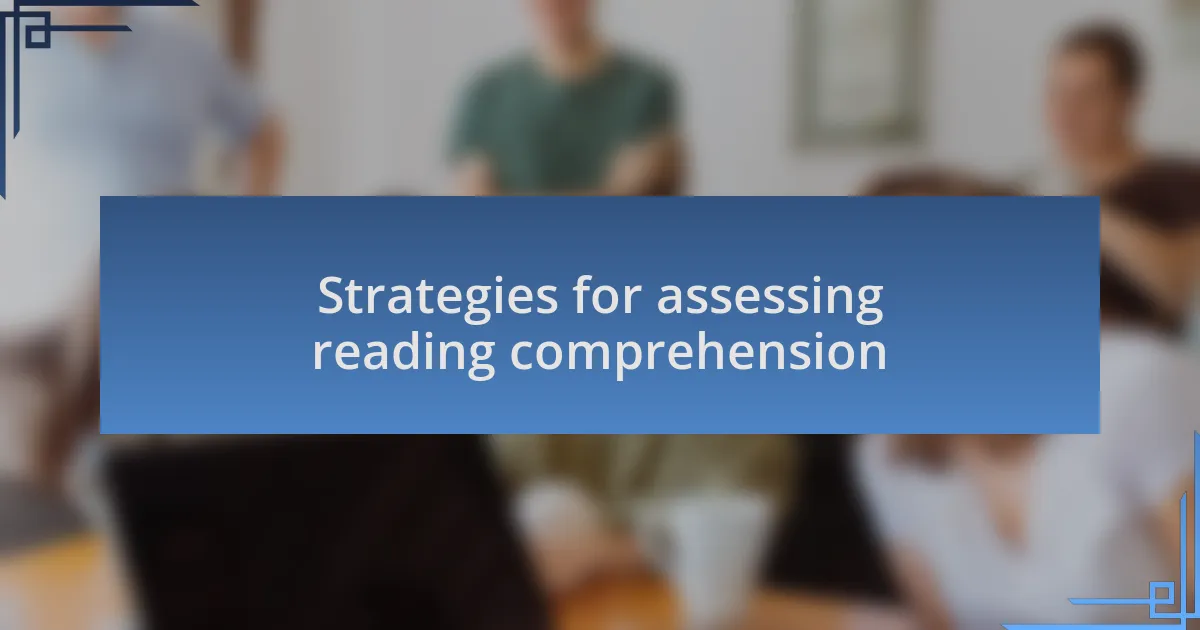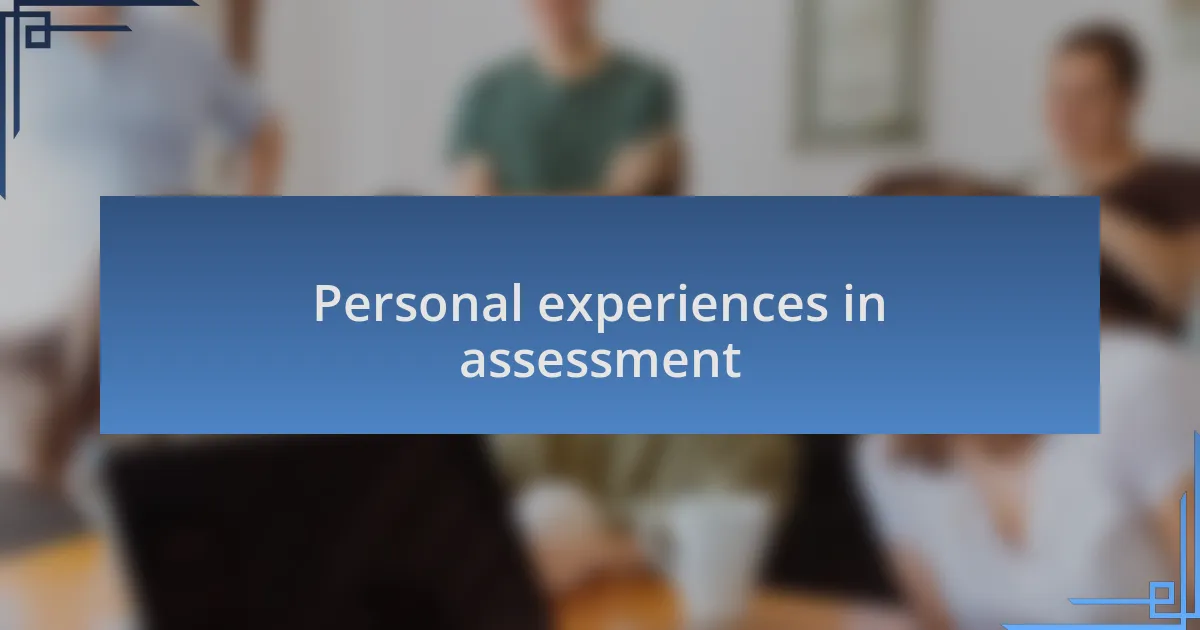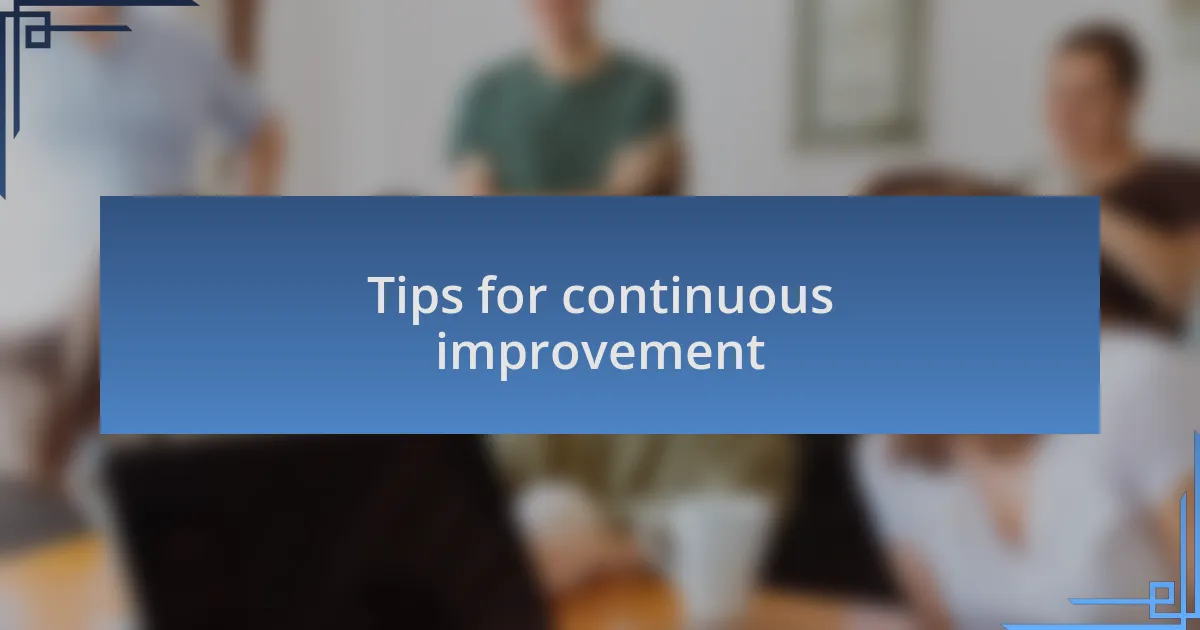Key takeaways:
- Reading comprehension is about understanding meaning beyond just decoding words, requiring practice and reflection.
- Effective strategies for assessing comprehension include open-ended questions, graphic organizers, and reading aloud sessions.
- Utilizing digital platforms and peer assessments can enhance the comprehension evaluation process, fostering engagement and collaboration.
- Continuous improvement relies on reflection, seeking student feedback, and staying updated with new teaching methods.

Understanding reading comprehension
Reading comprehension is more than just the ability to decode words; it’s about understanding and interpreting the meaning behind those words. I remember a time when I was struggling with a particularly complex text. It felt like I was lost in a maze of words, seeking clarity but finding none. This experience reinforced for me that comprehension involves connecting ideas, not merely recognizing them.
Consider how often we read something and think we understand it, only to realize we’ve missed the core message. Have you ever had that moment of doubt? For me, it often happens with dense academic texts. When reading became overwhelming, I learned to pause and ask questions like, “What is the author really trying to convey?” This inquiry not only deepened my understanding but made reading a more engaging experience.
Ultimately, reading comprehension is a skill that requires practice and patience. It’s an emotional journey, filled with moments of frustration but also of triumph. When we reflect on our progress, we might ask ourselves, “How have my strategies evolved?” Each small victory contributes to a greater sense of empowerment in our reading ability.

Importance of reading comprehension
Reading comprehension is vital because it underpins our ability to engage with the world around us. I think back to my school days, when what seemed like a straightforward reading assignment often revealed layers of meaning that shaped my understanding of various subjects. Have you ever found that one passage in a book that changed your perspective? That’s the power of comprehension—it’s not just about knowing what words are written, but truly grasping their significance.
When I reflect on my own reading experiences, I realize that a good grasp of comprehension helps in everyday decision-making. Consider a time when I read through instructions for a DIY project and misinterpreted a key step. The result? A frustrating setback that could have been avoided. This exemplifies why being able to extract and apply meaning is critical—not just in academia, but in practical life too.
Moreover, reading comprehension fosters empathy and connection. I remember diving into novels that opened my eyes to different cultures and experiences. Each story allowed me to step into someone else’s shoes, fostering a deeper understanding of the world. Could it be that the more we comprehend, the more compassionate we become? This connection to others reinforces the notion that comprehension is not just an academic skill; it’s a bridge to richer human experiences.

Strategies for assessing reading comprehension
Assessing reading comprehension can take many forms, but one effective strategy I’ve found is using open-ended questions. When I ask students to elaborate on a text, I usually see a deeper engagement with the material. For instance, I remember a discussion about a character’s motivations in a story. Instead of a simple “yes” or “no” answer, I encouraged students to dive into their reasoning, and the insights they shared often revealed their understanding far beyond what I expected.
Another approach that has worked well in my experience is using graphic organizers. These visual tools can really help students outline their thoughts in a structured way. I recall introducing a mind map to a group of learners while tackling complex texts. They seemed to light up as they connected ideas visually, which made the content more accessible and meaningful to them. Have you ever noticed how a visual representation can unlock understanding?
Finally, I find that incorporating reading aloud sessions can be invaluable for assessing comprehension. Hearing a student articulate a passage often provides insight into their grasp of the text. One time, during a read-aloud activity, I noticed a shy student come alive as they voiced their thoughts on the text. Their enthusiasm was palpable, showing that sometimes, the act of reading itself can be a window into one’s comprehension.

Tools for effective assessment
When it comes to assessment tools, I’ve found that utilizing digital platforms can significantly enhance the process. One tool I often recommend is online quizzes that provide instant feedback. I remember using a platform where students could answer multiple-choice questions on a passage we had read. The excitement in the room was palpable when they immediately saw their scores and could discuss the correct answers right away. Isn’t it fascinating how technology can transform comprehension assessment into an interactive experience?
Another effective assessment method I’ve employed is the use of audio recordings. Having students record themselves summarizing a text allows them to articulate their understanding while also honing their speaking skills. I once had a student who initially struggled with reading; however, when we shifted to audio recording, they thrived. Listening to their summaries revealed not just understanding but also a confidence that was a joy to witness. Have you noticed how the act of speaking about what we read can deepen our comprehension?
I also advocate for incorporating peer assessments into reading comprehension evaluations. I encourage students to share their interpretations of stories with one another, fostering discussion and collaboration. I fondly recall a session where one student’s perspective sparked a lively debate among peers, leading to a richer understanding of the text. It’s remarkable how learning from one another can uncover insights that might otherwise remain hidden. Isn’t it rewarding to see students learn together in such a meaningful way?

Personal experiences in assessment
In my experience, assessing reading comprehension is often about more than just the words on a page; it’s about understanding the individual behind them. I once worked with a student who was quiet and often overlooked in class. When I implemented one-on-one assessments, I realized just how much they had to say. It was a revelation; their insights were profound, and I found myself reflecting on how important it is to create a space where students feel safe to express their thoughts.
I remember conducting a reading assessment with a group of students who had been struggling profoundly. Instead of traditional methods, we delved into graphic organizers. Watching them take notes and map out their thoughts visually was like witnessing a lightbulb moment for many. It reminded me how critical it is to tap into various learning styles. Have you ever noticed how a simple change in strategy can unlock a student’s potential?
I’ve also found that in assessing reading comprehension, building rapport with each student makes a world of difference. During assessments, I often share my own reading challenges, which helps to humanize the process. There was a moment when a student shared their fears about reading aloud, and it struck me how connecting on that level can transform anxiety into empowerment. Isn’t it incredible to see how vulnerability can foster growth and understanding among learners?

Tips for continuous improvement
When it comes to continuous improvement, I emphasize the value of reflection. After each assessment, I take time to evaluate what worked and what didn’t. For instance, after trying a new strategy, I sometimes ask myself, “Did the students respond positively?” Reflecting on these experiences not only sharpens my approach but also aids in adapting to the unique needs of each learner.
In my journey, I’ve found that seeking feedback from students can be transformative. I often create a simple survey or have an informal chat after assessments. Once, a student shared that they preferred discussing their thoughts with a partner before writing them down, which opened my eyes to the importance of collaboration in comprehension. How often do we overlook the student’s voice in our quest for improvement?
Additionally, I make it a point to stay updated with the latest research and techniques in reading comprehension. I find resources from workshops or online courses that resonate with my teaching style. One workshop on multisensory approaches inspired me to incorporate more tactile experiences into assessments. Have you ever embraced a new technique that completely changed your perspective? It’s moments like these that remind me that growth is a continuous journey, fueled by curiosity and adaptability.